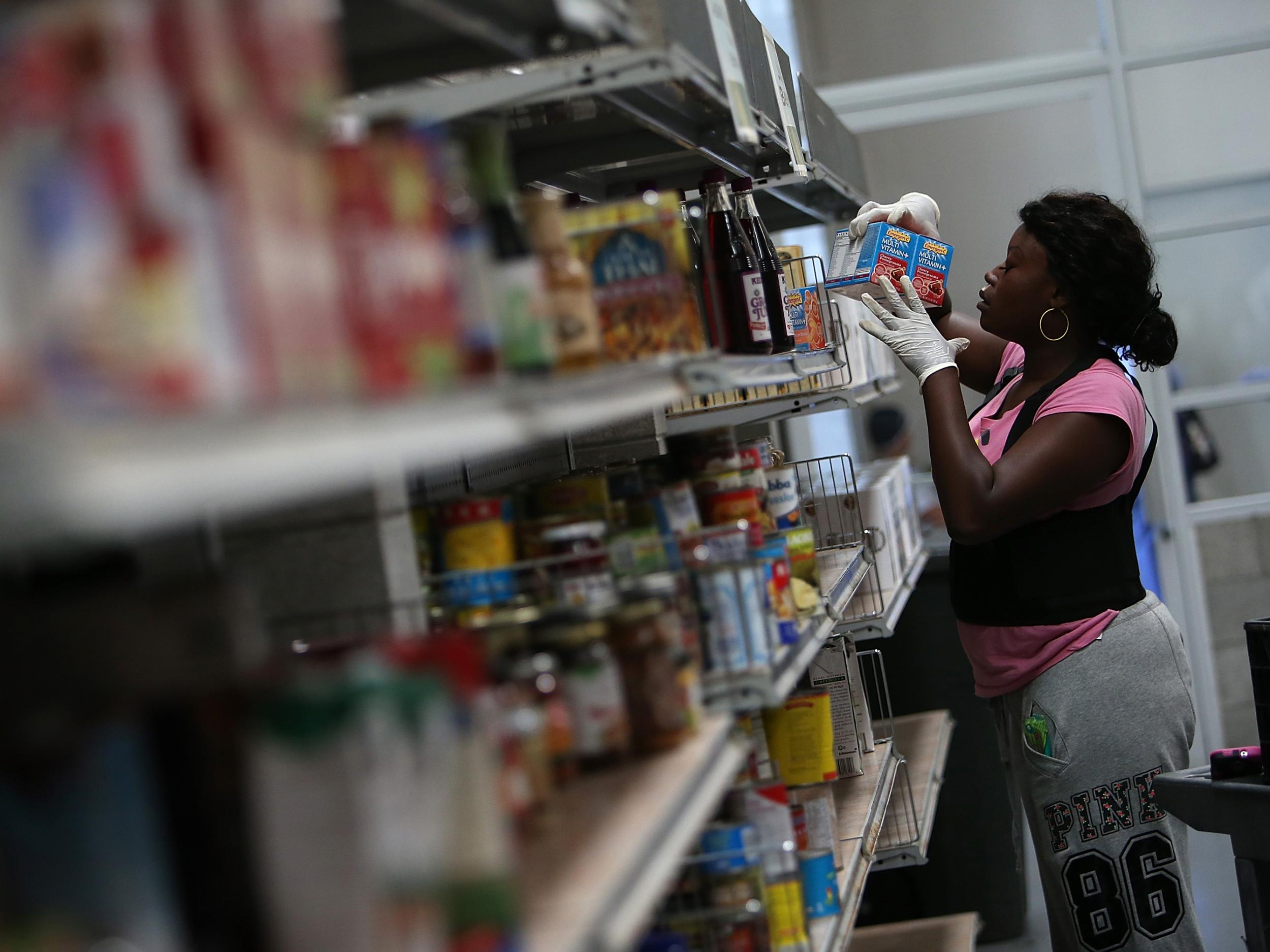Trump administration wants to scrap food stamps and give poor people boxed food instead
Proposal condemned by anti-hunger charities who argue it shares parallels with wartime rations and soup lines during Great Depression

The Trump administration has proposed a plan to cut food aid for low-income families by giving them boxes of government-selected canned foods instead of food stamps.
The new system signals a total overhaul of one of America’s most vital safety net welfare schemes – the Supplemental Nutrition Assistance Program (Snap), previously referred to as food stamps.
The idea, which was announced on Monday, means benefit recipients largely lose the personal choice to choose the food they buy with their Snap benefits.
The White House proposal has been widely condemned by anti-hunger charities and analysts who argue it not only shares parallels with wartime rations and soup lines during the Great Depression but would also be a logistical catastrophe.
Under the new system, low-income Americans who receive at least $90 (£65) a month - just over 80 per cent of all Snap recipients – will get about half of their benefits in the form of a “USDA [United States Department of Agriculture] Foods package”.
If approved, the new system, which the Department of Agriculture is branding “America’s Harvest Box”, will affect 16.4 million households.
The package, which will not include fresh fruit or vegetables, would be made up of "100 per cent US grown and produced food" and was described in the budget as consisting of "shelf-stable milk, ready to eat cereals, pasta, peanut butter, beans and canned fruit and vegetables".
The White House Office of Management and Budget director, Mick Mulvaney, described the proposal as a “Blue Apron type program” – a reference to the high-end meal kit delivery company that had one of the worst stock debuts in 2017.
He claimed the new system, which the US Department of Agriculture says will save over $129bn over a decade, would not just curtail government spending but also give recipients more nutritious food than they are currently eating.
Nevertheless, the package the Trump team are proposing shares little in common with firms like Blue Apron because they do not comprise fresh food.
The New York Times' op-ed writer, Bryce Covert, drew attention to the disparity between the two schemes on Twitter.
He said: “With Blue Apron, you get to pick your meals and decide when they come. And it gives you all the ingredients you need to complete it. Under Trump's plan, the government decides what you get and when you get it.”
Joel Berg, CEO of Hunger Free America, a campaign group that helps clients access food-assistance services, also condemned the administration’s proposal.
“While it’s always shocking to see $213bn in cuts - $20bn more than proposed last year to one of the most effective anti-poverty programmes available, the structural changes to Snap will make it even harder to combat hunger in America,” he said in a statement.
“It would require a massive new governmental bureaucracy to micro-manage the food consumption of low-income Americans. Amazingly, this proposal would slash food aid but somehow manage to grow the size of big government. There’s no way one can improve nutritional outcomes in families on Snap by reducing the amount of money they have available for fresh fruits, vegetables, and milk.”
The proposal is included in the Trump administration’s budget request for fiscal year 2019 and needs approval from Congress.
It is not clear how the new scheme will be adapted for families who might have healthcare needs like diabetes or have young children.
The plan has been criticised by food companies – particularly Aldi, Walmart and Target – who could lose billions if it were implemented.
When pressed about how delivery would be carried out, Mr Murtaugh said states would have “flexibility” in how they chose to deliver the parcels but he made it clear they would not be using an Amazon style of delivery system.
“The projected savings does not include shipping door-to-door for all recipients," he said.
Join our commenting forum
Join thought-provoking conversations, follow other Independent readers and see their replies
Comments